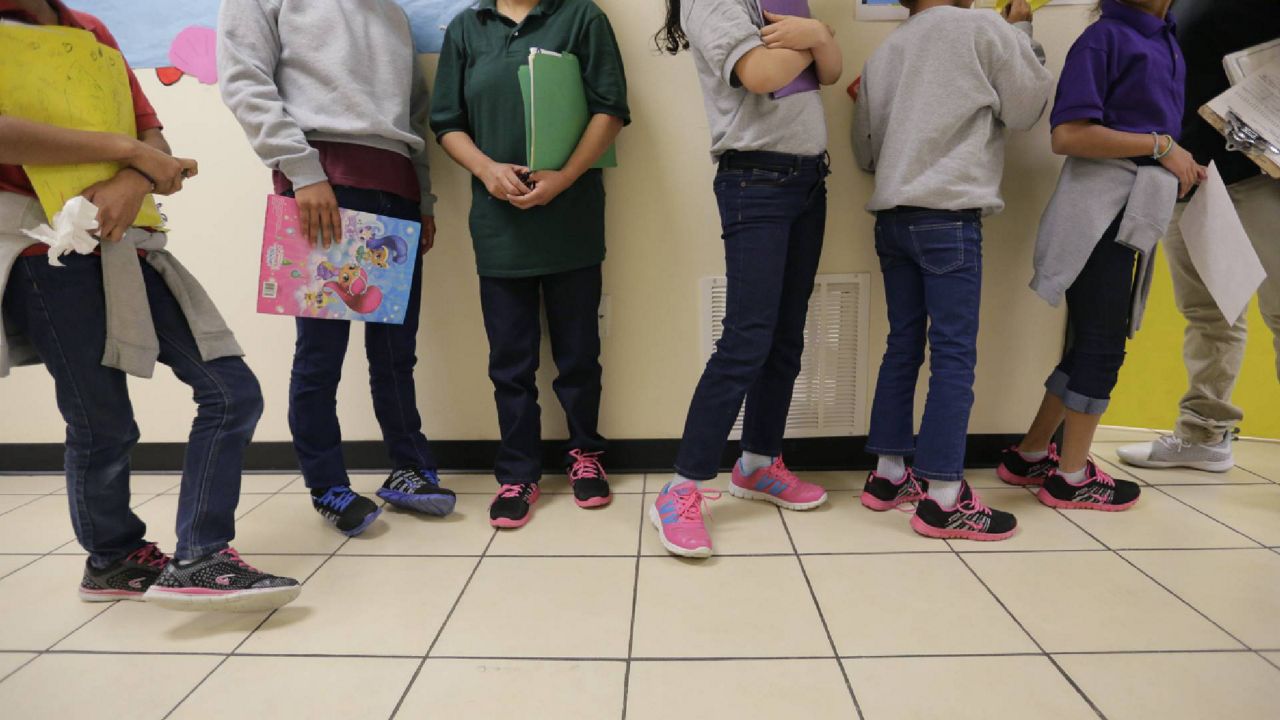On Friday, the Biden administration officially ended an information sharing agreement between Immigration and Customs Enforcement (ICE) and the agencies caring for unaccompanied children who cross the border, according to administration officials who said the agreement delayed finding family sponsors for the kids.
The Trump-era agreement required information sharing about children from the moment they entered Customs and Border Protection (CBP) custody to the moment they were released to a sponsor, usually a family member.
But it also required that information about the sponsor and anyone living with the sponsor also be shared with ICE, which officials said created a “chilling effect” for families who did not have legal status and feared deportation.
"In its place, DHS and HHS signed a new Memorandum of Agreement that promotes the safe and timely transfer of children," the Department of Homeland Security and Department of Health and Human Services said in a joint statement Friday.
"The new agreement does not change safeguards designed to ensure unaccompanied children are unified with properly vetted sponsors who can safely care for them while they await immigration proceedings."
The policy led to multiple arrests of sponsors in 2018, according to reports at the time, which later led to Congress blocking the practice in a 2019 spending bill. On Friday, officials said they hoped the agreement's official end would speed the process of matching kids with sponsors who might have previously avoided coming forward.
The announcement comes as the U.S. faces a surge in unaccompanied minors reaching the border, including nearly 9,500 last month, the highest since a peak in 2019.
A record 3,700 are in CBP custody, according to CNN, many of whom are being held longer than allowed by US law, which requires children to be transferred to a shelter within three days.
In response to the influx of migrant children, officials said Friday that they are “on track” to expand shelter capacity in order to house more kids, but they did not offer details about where or when the facilities might open.
Already, the administration reopened an overflow facility in Carrizo Springs, Texas, last month that was meant to house another 700 children under COVID-19 protocols, though the CDC later changed its guidance to allow shelters to operate at 100 percent capacity.
Shelters like Carrizo Springs are overseen by the Department of Health and Human Services (HHS) and often include educational, medical and mental health services for kids. As of mid-February, the department had more than 6,000 kids in its care, out of more than 13,200 available beds.
The Biden administration has faced backlash for detaining migrant children at all, especially in border facilities not meant for long term care, though officials said taking kids in was the “best option” given that the previous administration turned kids away at the border under a pandemic-related order.
“That is a policy decision which we made because we felt it was the most humane approach to addressing what are difficult circumstances in the region,” White House press secretary Jen Psaki said in a March 9 briefing.
Administration officials said they plan to notify Congress about any additional facilities planned for unaccompanied children, as required, but for now they don’t plan to ask for more funding to address the surge at the border.
In February, migrant children stayed in HHS shelters for an average of 37 days, according to an administration official.



